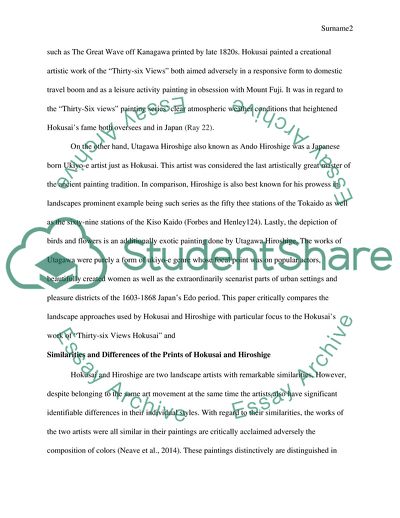Cite this document
(Hokusai and Hiroshige's Approaches to Landscape Essay Example | Topics and Well Written Essays - 2250 words, n.d.)
Hokusai and Hiroshige's Approaches to Landscape Essay Example | Topics and Well Written Essays - 2250 words. https://studentshare.org/visual-arts-film-studies/1870764-two-approaches-to-landscape-the-prints-of-hokusai-and-hiroshige
Hokusai and Hiroshige's Approaches to Landscape Essay Example | Topics and Well Written Essays - 2250 words. https://studentshare.org/visual-arts-film-studies/1870764-two-approaches-to-landscape-the-prints-of-hokusai-and-hiroshige
(Hokusai and Hiroshige'S Approaches to Landscape Essay Example | Topics and Well Written Essays - 2250 Words)
Hokusai and Hiroshige'S Approaches to Landscape Essay Example | Topics and Well Written Essays - 2250 Words. https://studentshare.org/visual-arts-film-studies/1870764-two-approaches-to-landscape-the-prints-of-hokusai-and-hiroshige.
Hokusai and Hiroshige'S Approaches to Landscape Essay Example | Topics and Well Written Essays - 2250 Words. https://studentshare.org/visual-arts-film-studies/1870764-two-approaches-to-landscape-the-prints-of-hokusai-and-hiroshige.
“Hokusai and Hiroshige'S Approaches to Landscape Essay Example | Topics and Well Written Essays - 2250 Words”. https://studentshare.org/visual-arts-film-studies/1870764-two-approaches-to-landscape-the-prints-of-hokusai-and-hiroshige.


